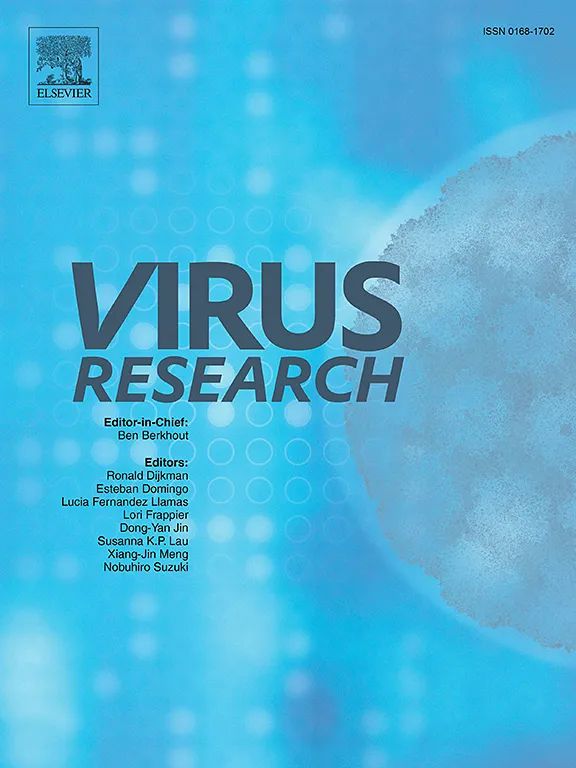Isolation, characterization and genomic analysis of bacteriophages for biocontrol of vibriosis caused by Vibrio alginolyticus
IF 2.7
4区 医学
Q3 VIROLOGY
引用次数: 0
Abstract
Vibrio alginolyticus is a significant opportunistic pathogen in marine environments, affecting both marine organisms and humans. The rise of antibiotic-resistant strains has prompted the exploration of bacteriophages as alternative biological control agents. In this study, 414 lytic bacteriophages specific to V. alginolyticus were isolated from various seafood and environmental samples. Phages P122, P125, and P160 demonstrated the broadest host range, effectively lysing 79.01 % of fish pathogenic V. alginolyticus strains and 44.69 % of environmental strains. However, no activity was observed against clinical V. alginolyticus strains or other tested species, including V. harveyi, Escherichia coli, Staphylococcus aureus, and Aeromonas hydrophila. One-step growth curve analysis revealed latent periods of 40 to 60 min and burst sizes ranging from 140 to 367 PFU/infected cells. Transmission electron microscopy (TEM) classified these phages within the class of Caudoviricetes with an icosahedral head and a long non-contractile tail. Moreover, whole-genome sequencing (WGS) identified genome sizes of approximately 76 kb, with 272–280 open reading frames (ORFs), no tRNA and pathogenic-associated genes. Comparative genomic analysis showed over 97 % similarity with other Vibrio phages. Phylogenetic analysis based on the terminase subunit also confirmed phages P122, P125, and P160 belonging to the class of Caudoviricetes. The phages were non-toxic to Galleria mellonella larvae and showed promise in reducing mortality rates when used as a cocktail treatment. The study highlights the potential of these phages as effective biocontrol agents in aquaculture, offering a promising alternative to antibiotics for managing Vibrio infections.
溶藻弧菌弧菌病生物防治噬菌体的分离、鉴定及基因组分析。
溶藻弧菌是海洋环境中一种重要的条件致病菌,对海洋生物和人类都有影响。耐抗生素菌株的增加促使人们探索噬菌体作为替代生物防治剂。本研究从各种海产品和环境样品中分离出414个特异的溶藻弧菌噬菌体。噬菌体P122、P125和P160的宿主范围最广,能有效裂解79.01%的鱼类致病性解藻弧菌和44.69%的环境致病性解藻弧菌。然而,没有观察到对临床溶藻弧菌菌株或其他测试物种的活性,包括哈维氏弧菌、大肠杆菌、金黄色葡萄球菌和嗜水气单胞菌。一步生长曲线分析显示潜伏期为40至60分钟,爆发大小为140至367 PFU/感染细胞。透射电子显微镜(TEM)将这些具有二十面体头部和长而不收缩的尾巴的噬菌体归类为尾状刚毛菌类。此外,全基因组测序(WGS)鉴定出基因组大小约为76 kb,有272-280个开放阅读框(orf),没有tRNA和致病相关基因。比较基因组分析显示,与其他噬菌体弧菌的相似性超过97%。基于末端酶亚基的系统发育分析也证实了噬菌体P122、P125和P160属于尾柱菌纲。这些噬菌体对mellonella幼虫没有毒性,当用作鸡尾酒治疗时,显示出降低死亡率的希望。该研究强调了这些噬菌体在水产养殖中作为有效生物防治剂的潜力,为管理弧菌感染提供了一种有希望的抗生素替代品。
本文章由计算机程序翻译,如有差异,请以英文原文为准。
求助全文
约1分钟内获得全文
求助全文
来源期刊

Virus research
医学-病毒学
CiteScore
9.50
自引率
2.00%
发文量
239
审稿时长
43 days
期刊介绍:
Virus Research provides a means of fast publication for original papers on fundamental research in virology. Contributions on new developments concerning virus structure, replication, pathogenesis and evolution are encouraged. These include reports describing virus morphology, the function and antigenic analysis of virus structural components, virus genome structure and expression, analysis on virus replication processes, virus evolution in connection with antiviral interventions, effects of viruses on their host cells, particularly on the immune system, and the pathogenesis of virus infections, including oncogene activation and transduction.
 求助内容:
求助内容: 应助结果提醒方式:
应助结果提醒方式:


